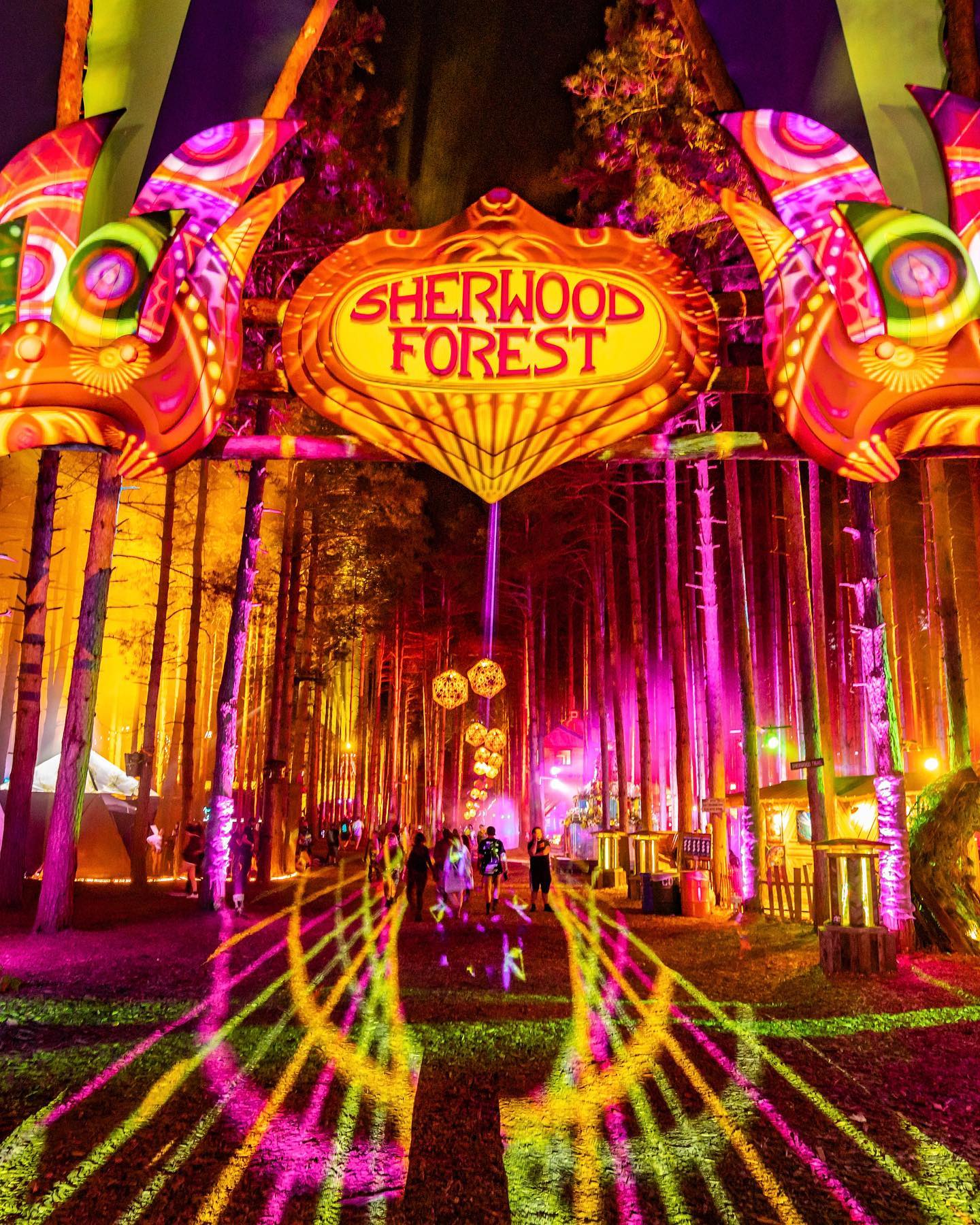Inclusion is an important value in the music community that is emphasized by music events worldwide. Accessibility and accommodations at festivals are at the heart of this by focusing on creating the best possible experience for all attendees. Today we will take a deep dive into how the beloved Electric Forest music festival addresses the needs of all its visitors.
For those who do not know, these accommodations are mandated by the American Disability Act or ADA. The ADA requires events and public spaces to have access options that allow a person with disabilities to use and enjoy the space in a way that someone without disabilities would. At concerts and festivals these accommodations are handled by an ADA team, and what is offered varies from show to show.
Naturally, Electric Forest had such a team and various access accommodations in 2023. This year, the options started out rough. The website stated that a dedicated campground entrance was to be provided. Upon arrival at 12:03 am Thursday morning we discovered that this was not the case. There were no signs directing to an access line and when approached, multiple staff members had no idea what we were asking for. Once we made it to the security checkpoint, a manager asked why we did not utilize the access line and we explained. The manager then pointed to the distant end of the checkpoints where the access checkpoint was. Not only was it at the far end without signage but it was also blocked from view by trailers and trees.
Once we made it past the security checkpoint, things did not get better. None of the ground crew knew either what Camp Access (ADA camping) was, or if they did, could not direct us to it. I only had a faint idea of how to get there because this was my second time attending the festival. Eventually, we were directed to a spot to park and wait for another manager, who then proceeded to tell us that ADA was closed so no one would direct us to the correct location and just pointed in the general direction.
After driving through multiple established camping areas, we finally found it—in chaos. Unlike every other campground with staff and fire marshalls directing people, there were no staff in the area. The campground was disorganized and more importantly, there were no staff checking to make sure people in the area had handicap placards or were the +1 allowed vehicle. We were lucky to find a spot along the fence line of the venue that was most definitely not supposed to be a camping area, but we set up camp next to other groups. In the morning our neighbors told us that although early arrival started Tuesday afternoon, not a single staff or security member was looking over Camp Access. We then discovered that the only accessible shower was not located inside Camp Access, but about a ⅓ mile from the edge of the campground, making them inaccessible to many individuals.
The Camp Access information desk finally opened at 12pm Thursday, roughly 48 hours after the first guest arrived at the campsite.
While the negatives were difficult to cope with, there were some positives. The first was the registration. Each ADA guest was assigned a number. This allowed people to replace their ADA wristbands if they lost them, but did not allow people to abuse the system and get multiple bands for their friends. This was effective because all ADA wristbands had to be scanned in and out of the venue like a regular wristband.
The ADA wristband allowed wearers and one guest to use the ADA line at the front entrance as well as the side entrances. These side entrances offered access to the best accommodation that Electric Forest had to offer, chauffeured golf carts to multiple points within the festival grounds. These carts were an absolute godsend. As a person with a mobility disability, the carts allowed me to cut at least half of my walking out of the equation for the entirety of the festival, allowing me to focus on the music and my friends instead of pain and discomfort. For the most part, security personnel at these side gates were informed that ADA guests would be using them to gain access to the golf carts. However, on Friday night the security manager was only allowing people in wheelchairs to use the golf carts, a call he had no authority to make. Thankfully we got into a golf cart after walking to a second side entrance and the driver brought the issue to his manager’s attention. I was told the next morning that the security personnel was re-briefed about who could and could not utilize the golf carts.
Another accommodation that many may be familiar with is the elevated seating and viewing platforms. These platforms allow people who may have a lower viewing angle to see the stage and enjoy the show, rather than be blocked by people in front of them. These stages also provide seating so that people, like myself, can take a moment to rest in a chair. These platforms also have the added benefit of some protection from the crowd to avoid being knocked over or pushed down.
Overall, I would give the accommodations of Electric Forest a C+. The ADA team was helpful and for the most part, things went well once they started working, however, the fact that Camp Access was disorganized and understaffed during the arrival period and the added complication that the only accessible shower was located a long way from Camp Access brings an otherwise great experience down a few notches.
CONNECT with Electric Forest:













